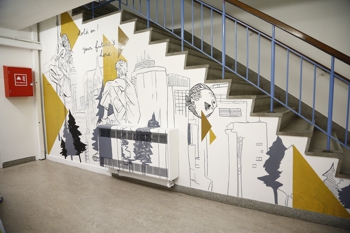Wall art or traditional sign? - HNS Signs



For Michelle Healy and the team at HNS Signs, keeping the interest in traditional signwriting alive comes down to adapting the way it’s marketed.
“Other signwriters may not be looking at what it’s called today; people don’t phone and ask for a traditional sign, they ask for wall art, which is what we call it,” she explains. “We are inundated with requests, and use this contemporary twist on what it’s called as a USP to help us get sales.”
Another way sign writers can increase the demand for traditional signwriting is to offer it alongside other products, and put them together as a package. “The chances of people wanting just that on it’s own is quite low, but it seems it’s becoming more fashionable to mix the two.”
Michelle notes they are seeing a great deal of demand from bars and restaurants, and that there’s a keen interest from clients watching the team in action as they do the hand-painted traditional sign writing. A recent job includes a sign for a French restaurant in London, and the brief specified they wanted a hand painted sign. For clients, there are many benefits to choosing this traditional method – for example, it’s ideal for busy environments as it is heavy duty, and perfect for permanent signage as it’s long lasting and eye catching. Paint is much more hardwearing compared to things you could put up like a wallpaper or vinyl decal. You still see signwriting on the sides ofbuildings dating back to 1800s, the paint just lasts and lasts,” says Michelle, adding that substrates will normally give before the paint.
Part of prolonging the shelf life of wellfinished traditional signage lies with correct preparation and finishing. HNS Signs recently did a job for a restaurant in London, where they applied paint onto Marine Plywood, sealed all edges, and went over the design with Ronseal wood protect. “We’d expect that to last about ten years,” she says.
